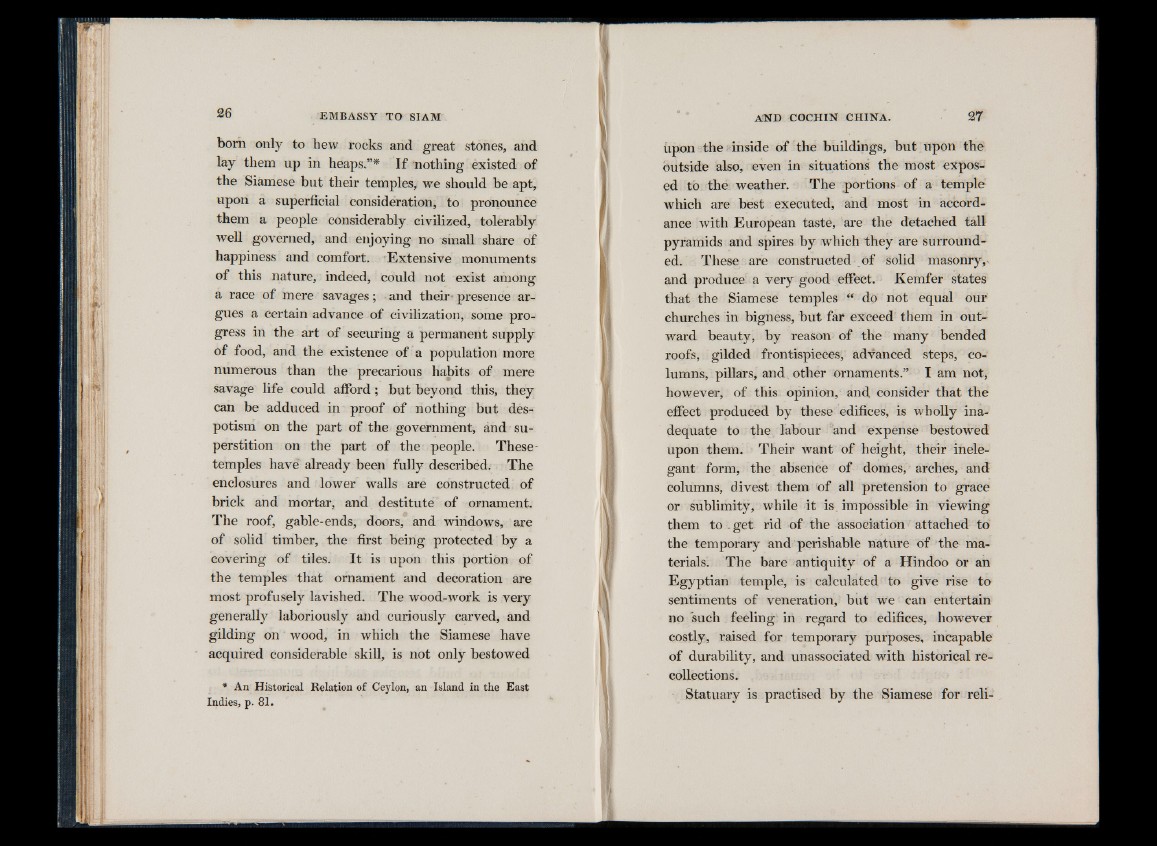
born only to hew rocks and great stones, and
lay them up in heaps.”* If nothing existed of
the Siamese but their temples, we should be apt,
upon a superficial consideration, to pronounce
them a people considerably civilized, tolerably
well governed, and enjoying no small share of
happiness and comfort. Extensive monuments
of this nature, indeed, could not exist among
a race of mere savages; and their- presence argues
a certain advance of civilization, some progress
in the art of securing a permanent supply
of food, and the existence of a population more
numerous than the precarious habits of mere
savage life could afford; but beyond this, they
can be adduced in proof of nothing but despotism
on the part of the government, and superstition
on the part of the people. These-
temples have already been fully described. The
enclosures and lower walls are constructed of
brick and mortar, and destitute of ornament.
The roof, gable-ends, doors, and windows, are
of solid timber, the first being protected by a
covering of tiles. I t is upon this portion of
the temples that ornament and decoration are
most profusely lavished. The wood-work is very
generally laboriously and curiously carved, and
gilding on wood, in which the Siamese have
acquired considerable skill, is not only bestowed
* An Historical Relation of Ceylon, an Island in the East
Indies, p. 81.
upon the inside of the buildings, but upon the
outside also, even in situations the most exposed
to the weather. The portions of a temple
which are best executed, and most in accordance
with European taste, are the detached tall
pyramids and spires by which they are surrounded.
These are constructed of solid masonry,v
and produce a very good effect. Kemfer states
that the Siamese temples “ dp not equal our
churches in bigness, but far exceed them in outward
beauty, by reason of the many bended
roofs, gilded frontispieces; advanced steps, columns,
pillars, and other ornaments.” I am not,
however, of this, opinion, and consider that the
effect produced by these edifices, is wholly inadequate
to the labour and expense bestowed
upon them. Their want of height, their inelegant
form, the absence of domes,' arches, and
columns, divest them of all pretension to grace
or sublimity, while it is impossible in viewing
them to get rid of the association attached to
the temporary and perishable nature of the materials.
The bare antiquity of a Hindoo or an
Egyptian temple, is calculated to give rise to
sentiments of veneration, but we can entertain
no such feeling in regard to edifices, however
costly, raised for temporary purposes, incapable
of durability, and unassociated with historical recollections.
Statuary is practised by the Siamese for reli